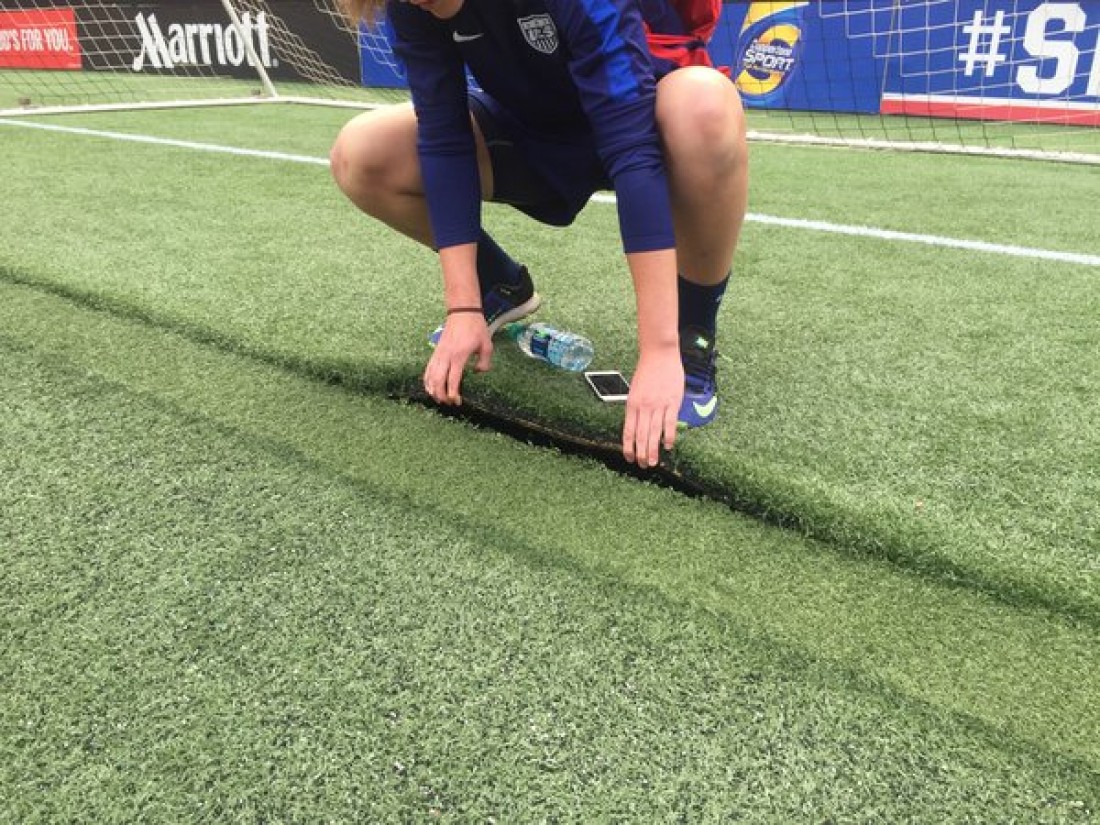The United States Women’s National Soccer Team decided to withdraw today from their scheduled friendly match versus Trinidad and Tobago in Aloha, Hawaii. The official reason cited for the cancellation was “dangerous field conditions” and. after seeing the picture above (originally posted by ESPN reporter and former US Women’s National Team star and World Cup winner Julie Foudy on Twitter this afternoon), it’s hard to argue with that sentiment.
The controversy surrounding today’s cancelled match, however, has seemed to re-kindle complaints regarding the use of artificial turf in soccer in general and women’s soccer in particular, that were very much commonplace earlier this year at the 2015 FIFA Women’s World Cup in Canada. In that tournament, all 53 matches were played on synthetic turf fields. Several of the participating players and teams, including members of the Canadian and United States Women’s National Teams, were very vocal in their criticism of FIFA for sanctioning and allowing a major international women’s soccer tournament to be played on synthetic turf. Among their valid points was that there has never been – and likely never will be – an international men’s soccer tournament played on anything but natural grass.
Much of the debate surrounding the efficacy of the use of synthetic turf fields in soccer has come about as a result of opinions that they are unsafe and place players at a higher risk of injury. In an article published today by Julie Kliegman of www.theweek.com, she states that the United States Women’s players have “taken issue” with playing on synthetic turf fields because they are “considered more dangerous for players than natural grass.” Recent scientific evidence, however, has suggested that these concerns about the safety – or lack thereof – of synthetic turf surfaces may be unfounded.
Several different independent scientific literature reviews have concluded that there are no differences in incidence and/or risk of injury in soccer between synthetic and natural grass surfaces. Firstly, in a paper titled “The effect of playing surface on injury rate: a review of the current literature” in 2010, Dragoo & Braun concluded that “despite differences in injury type, the rate of injury on third-generation and natural grass surfaces appears to be comparable.” More recently, a 2013 paper titled “a review of football injuries on third and fourth generation artificial turfs compared with natural turfs” conducted by Williams et. al. concluded that “studies have provided strong evidence for comparable rates of injury between new generation artificial turfs and natural turfs.” Finally, a 2015 review by Balazs et. al. focusing specifically on knee injuries titled “Risk of anterior cruciate ligament injury in athletes on synthetic playing surfaces: a systematic review” found that “while high-quality studies support an increased rate of ACL injury on synthetic playing surfaces in American football, there is no apparent increased risk in soccer.” Furthermore, a number of different soccer-specific research studies, including those by Aoki et. al. (2010), Bjorneboe et. al. (2010, Almutawa et. al. (2014), and Kristenson et. al. (2015) all found no significant difference in injury rates, or risk of injury, between artificial and natural soccer playing surfaces.
Poor quality fields and unsafe field playing surfaces, whether they are synthetic or natural, are certainly a valid concern for any competitive soccer player or team, male or female. Singling out synthetic turf surfaces, however, as being “more dangerous” than natural grass surfaces, does not make sense based on present scientific evidence. While more research is needed before any definitive conclusions about the safety of artificial playing surfaces can be made, right now it seems as though there are no differences in safety between artificial and natural playing surfaces for soccer players.
I’d love to hear your thoughts about this topic. Drop me a line here to get the conversation started.


Leave A Comment